Those of you who know me personally may have heard me rant about this topic before. It’s one that’s near and dear to my heart.
Tucking under the bar to mount the trapeze.
Some of you may be thinking “what’s the big deal? That’s how you get on the trapeze.” But those you of you who know what I’m talking about KNOW WHAT I’M TALKING ABOUT.
For some reason, it has been decided that tucking under the bar is the ONE TRUE WAY to mount a trapeze. And that if you can’t do it, you are not proficient, not accomplished, and not working hard enough. Inevitably, your instructor will demonstrate it again and say “You just do this!” and make it look easy. Because it is easy- for them!
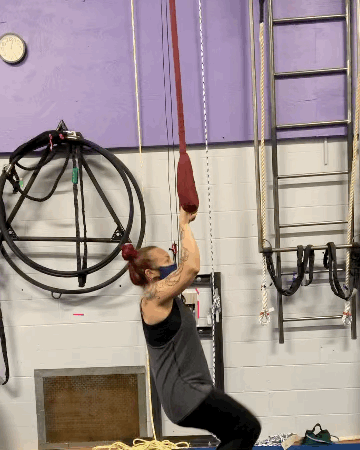
Your instructor may, in this case, be small, or thin, or super strong. Their shoulders might be wider than their hips. They probably don’t have a huge ass, a round belly, or face smothering boobs. And they almost certainly don’t have short arms.
And hey, if you are this instructor, I’m not mad at you. When your students are struggling with skills that your body does easily and naturally in a way you don’t even have to think about, you get some leeway for not understanding the issue right away. But as instructors, we should be growing all the time based on the needs of our students. This is your invitation to grow your ideas about how to mount a trapeze.
So, what’s the problem?
When we tuck through to mount the trapeze, we have a limited amount of space available. And if you’re mounting a lyra, you have even less space! Think about a body hanging from the bar: there is a window of space the length of the body’s arms. That window cannot get any bigger, it is impossible. In the case of the lyra, the bottom of the hoop is making that window smaller, lessening the space available. What happens if the body is too big to fit through the window?
Tears. And heartache, probably.
Bodies can be too big for that window for a variety of reasons. Most obviously, they could just have a bigger body. Or maybe it’s a body that has some larger parts like big boobs, a large stomach, or a big butt and legs.
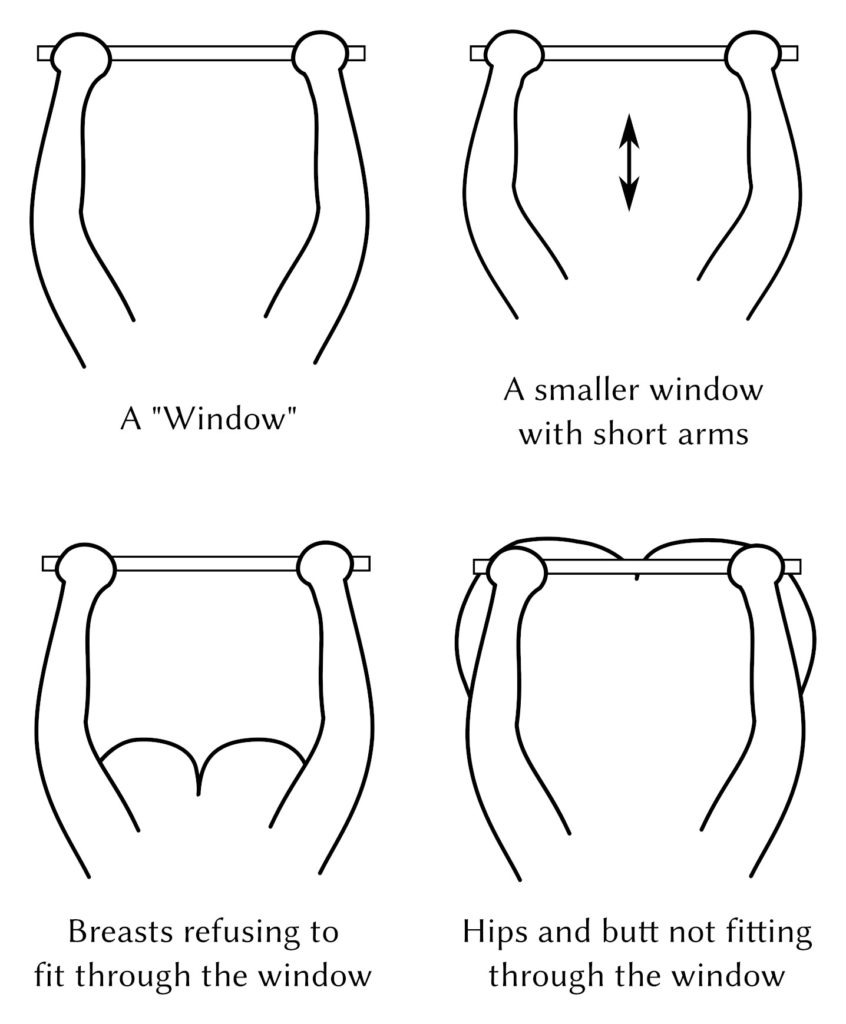
Less obvious factors might include arm length and compression.
Compression is your ability to get small and stay small. Some things that might limit someone’s ability to compress are their size, their ability to flex their low back, hamstring flexibility in pike compression, and injury. But compression is something that can improve with training!
Arm length, however, is fixed. How do you know if you or your student has short arms? An easy test is to sit on the floor in a pike. With your arms by your sides, try to press your hands flat onto the ground.

If you can get your palms flat, or even start to lift your hips, your arms are average to long. If you struggle to get your palms down, you’re officially in the ranks of the T-rex arm club.
Welcome, we’re happy to have you!
The short arm issue seems pretty self explanatory, but I want to point something out. Part of tucking under the bar involves going into scapular protraction: letting your shoulder blades slide towards the sides of your body. This is true for everyone who tucks under the bar. However, if you have short arms, you really have to hang into your end range of protraction. This is basically the opposite of all of the things we teach to keep your shoulders happy and healthy. If you are easily able to pass through the protraction moment, it’s not really a problem. But if you struggle, it’s possible to injure yourself by forcing this skill.
To determine whether or not tucking under the bar is even possible for you, try this: get into a knee hang however you need to. As you come down, tuck into your smallest shape, flex your feet and come down as slow as you can. If you are able to pass your feet under the bar easily, then you can probably tuck up. If your feet scrape or get stuck, you are probably not going to master this skill.
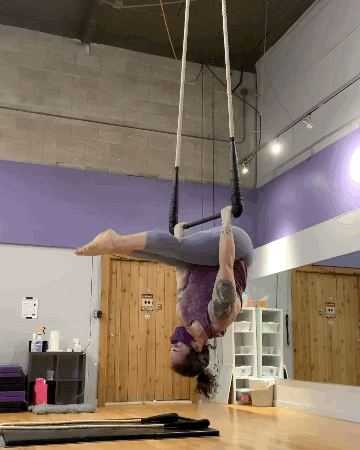
I’ve been teaching trapeze for a decade and I can’t do this skill. I spent years feeling embarrassed and inadequate. I’ve had other teachers make snide comments about it. There was a brief moment in 2013 when I was able to accomplish this skill consistently. What changed? I stopped working on it every single day. Seriously, who has time. I gained 20-30lbs. I hurt my back, affecting my ability to compress. And my shoulders got a lot stronger and more stable, which made it harder to sink into scapular protraction. But you know, I’m still pretty good at teaching trapeze even if I can’t tuck under the bar.
So why does it matter?
And that’s really my whole point in bringing this up. Why does it matter if you or your students can tuck under the bar? Who decided that was the metric for proficiency? It is completely arbitrary! Yes, it’s a functional skill, and it should absolutely be taught to those who can accomplish it. But I can’t count the number of people who have come into my class or taken a lesson with me who confess shamefully “I really struggle with tucking under the bar”. Maybe they were held back a level at another school because of it. Or had an instructor force them to drill it over and over. Or just watched their classmates do it easily and felt embarrassed every time they went to scramble up the bar, without having been given an alternative method of mounting.
And that really sucks.
I teach circus because I want my students to feel empowered and successful. I want them to come to my class and work hard and go home feeling like they accomplished something. And I want to be able to give that success to everyone who comes into my class! That means that I have to be ready to adapt my teaching to accommodate whoever is in front of me, rather than trying to force them to accommodate what I teach.
So maybe that means not focusing on the tuck mount. So what? There are so many other ways to mount a trapeze! Need a new way? Make it up! Look at all these different ways I got on a trapeze today!
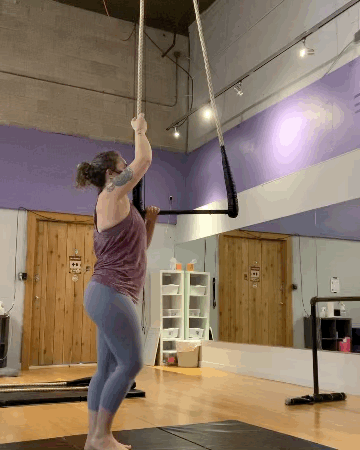
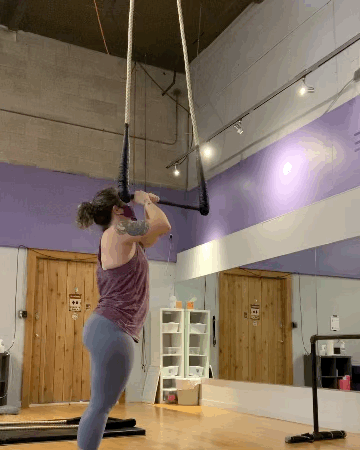

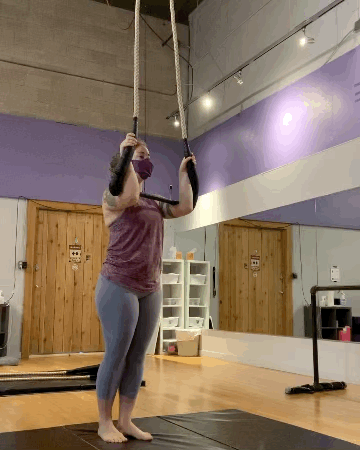
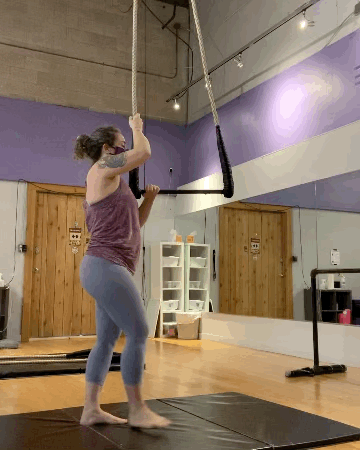

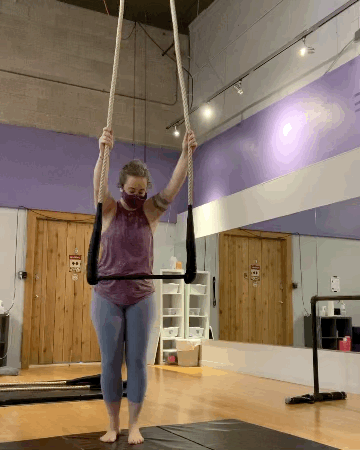
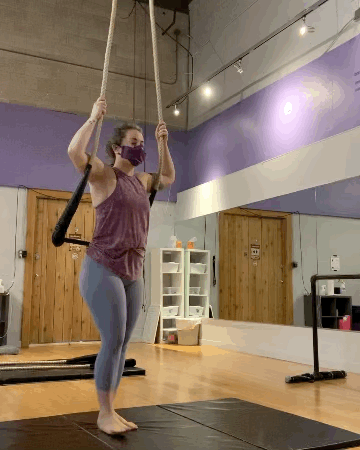
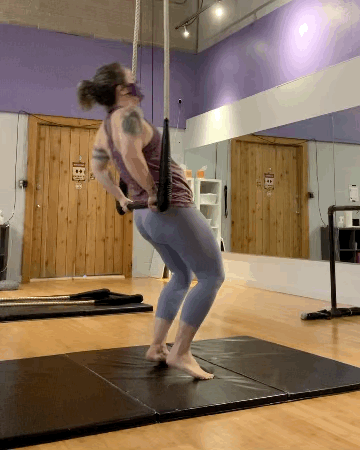
One of my favorite things about circus is the idea that there is room under the tent for everyone. But that means that we have to make room for everyone! As recreational circus arts increase in popularity, we’re going to get more and more students who are different shapes and sizes, and have different levels of ability. So make room for them!
Update!
When I first wrote this blog post in 2020, it resonated with a whole lot of people. So many people told me that they were in the T-rex arm trapeze club, and they wanted T-shirts.
So I made T-shirts!
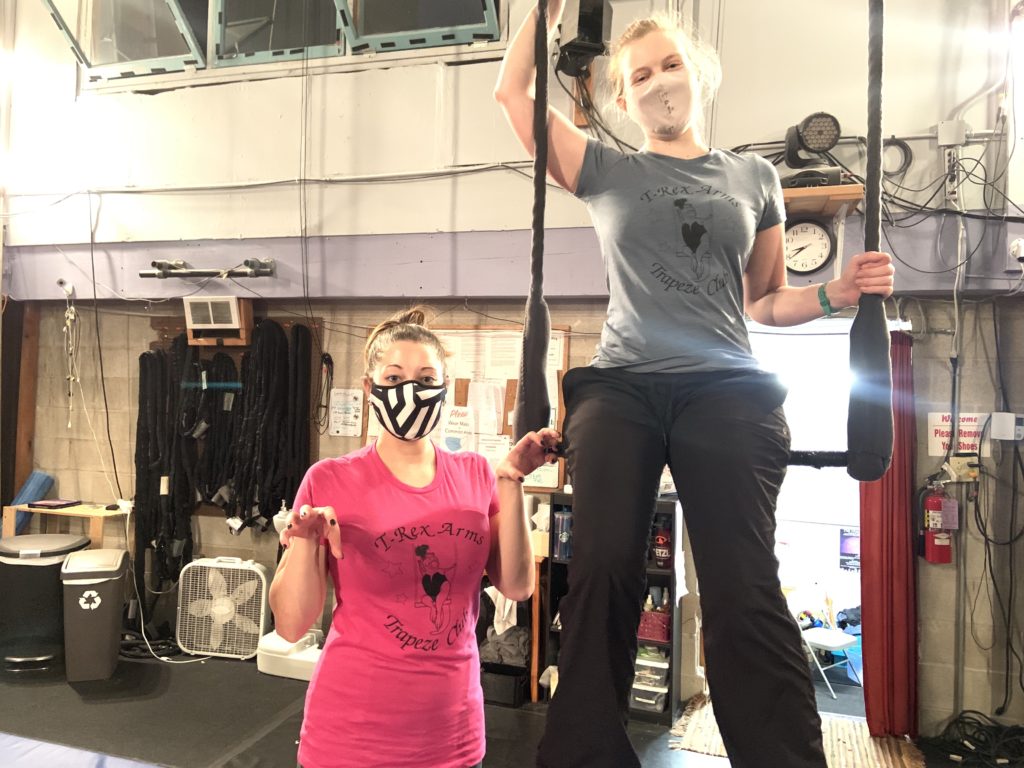
We raised over $300 for the Movement Voter Project, and a whole bunch of people got some sweet shirts to train in.
In the years since then, I’ve met so many more people in the T-rex arms club. Trapeze lovers, lyra lovers, and more. And, unfortunately, they’re still being shamed and held back by their instructors for not being able to tuck under the bar.
So, I think it’s time for another round of T-shirts. And this time, there’s T-rex lyra shirts too!
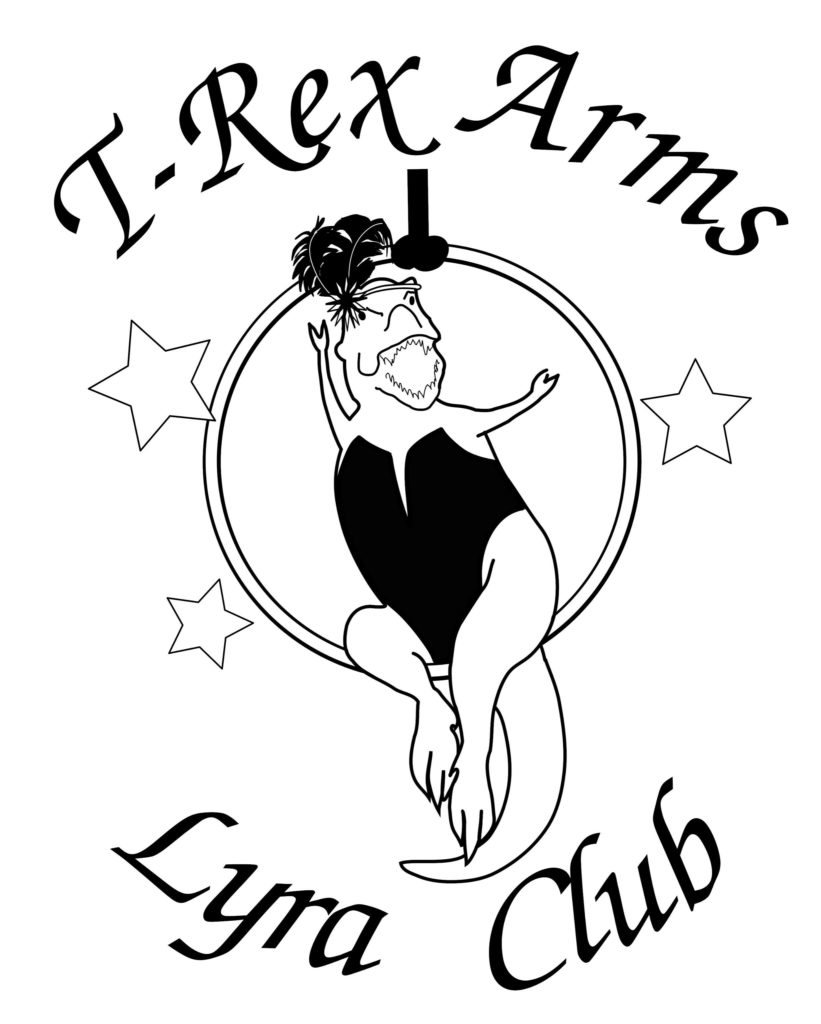
And to make you feel even better about buying yourself a silly shirt that celebrates your short arms, all profits will be donated to the Maui Food Bank and Maui Humane Society.
Trapeze shirts can be found here, and Lyra shirts are here.
Buy a shirt, support Maui, and tell your mean coaches to SUCK IT!
Want more of my strong opinions about coaching aerial?
Make sure to sign up for my mailing list!

Thank you for this! I have struggled on and off with this skill and have also had many students who couldn’t do this. I will have students continue to work toward this but do not make it a measure of success. And there are so many other ways to get on a trapeze or other apparatus!
The Real Person!
Author Lauren Kehl acts as a real person and passed all tests against spambots. Anti-Spam by CleanTalk.
I’m so glad you enjoyed it! It’s a great skill to work on, but it shouldn’t be the end all be all of trapeze mounts!
This is me! I have struggled with this for YEARS. I can just about do it if I come to fingertips and really sink down into my shoulders and really compress…. but forget ever being able to get through from a beat, my heels just smack the bar!
My teachers are genuinely lovely and encouraging and each one will insist I can do it, I “just need to… ”
Short arm struggles are real and it’s amazing to read a post that recognises that 🙂
The Real Person!
Author Lauren Kehl acts as a real person and passed all tests against spambots. Anti-Spam by CleanTalk.
When I first started figuring this all out, it was a revelation! Sometimes you’re doing as much as you can and it’s still not there, and that’s okay!
I don’t mean to be dramatic but I feel like this post was healing for me. As a student, I was kept from advancing at a studio for years because this skill was impossible for me. That hurt so bad at a time when I was so hungry for broad knowledge about trapeze– knowing that this one skill stood in the way of me learning more. I still feel embarrassed that I need to cross my legs.
The Real Person!
Author Lauren Kehl acts as a real person and passed all tests against spambots. Anti-Spam by CleanTalk.
I’m so sorry you had to go through that! I hope you embrace crossing your legs, and kick some serious butt on that bar!
Thank you for this as it makes me feel better about my struggles. Mine seem to be my difficulty in compressing my body to fit everything in due to tight hips though I have not tested my arms yet. This gives me something to work on but also the knowledge I am perfectly able to use alternative mounts for lyra and not feel like a failure.
The Real Person!
Author Lauren Kehl acts as a real person and passed all tests against spambots. Anti-Spam by CleanTalk.
YES! You can keep working on it, but don’t let it hold you back!
Thank you Lauren. This is so important! As you know, I am part of the T-rex arms club and I even strained my bicep once (it’s all healed now) pushing myself to drill this skill and going too far out of safe range of motion. More students and instructors need to understand this. Thanks for always reminding me I didn’t have to feel embarrassed and it didn’t make me bad at trapeze.
The Real Person!
Author Lauren Kehl acts as a real person and passed all tests against spambots. Anti-Spam by CleanTalk.
I’m so happy you’re one of my trapeze babies!
OMG thank you! I have massive meaty thighs and calves, hams that just are tight, and weenie little short arms. I can do all manner of things, but not the most basic of mounts!
The Real Person!
Author Lauren Kehl acts as a real person and passed all tests against spambots. Anti-Spam by CleanTalk.
Right there with you!
This is my nemesis! I always have felt like less of a performer bc of my inability to do this skill. I loathe the dreaded toe tap and have always felt like “I just don’t fit under” if I train daily I can get to a point where I just about make it under but still usually scrape. I prefer basing in double so I can pull to a catchers instead and transition out of there to be mounted. My other frustration comes from when brand new (never done aerial) students comes in and just do this skill on the first shot. 😩 Thanks for reassuring that others can also not necessarily do this skill smoothly.
The Real Person!
Author Lauren Kehl acts as a real person and passed all tests against spambots. Anti-Spam by CleanTalk.
You are so heard! The only time I could do this consistently, I had to train it daily and WHO HAS THE TIME!!! And yeah, when I have a brand new student who can just slide right under, a little part of me hates them. Just a tiny bit!
Not gonna lie, I nearly cried reading this post. I’m lucky to have kind instructors who accommodate my short arms and give me a boost every time I try to tuck, but it still stings when you can’t do it. Until reading this, I felt like it was a personal fitness flaw of mine. But my oh my, do I have short arms! When I try to find the space to tuck my fingers nearly slide off. So I appreciate you taking the time to speak on this and provide some alternatives. It’s empowering. I love my trapeze classes and it’s nice to know I can go into the next one without feeling the shame. Thank you
The Real Person!
Author Lauren Kehl acts as a real person and passed all tests against spambots. Anti-Spam by CleanTalk.
From one short arm trapeze artist to another, I get it. Do you, and figure out your own way to work it! I’m glad you have teachers you support you!